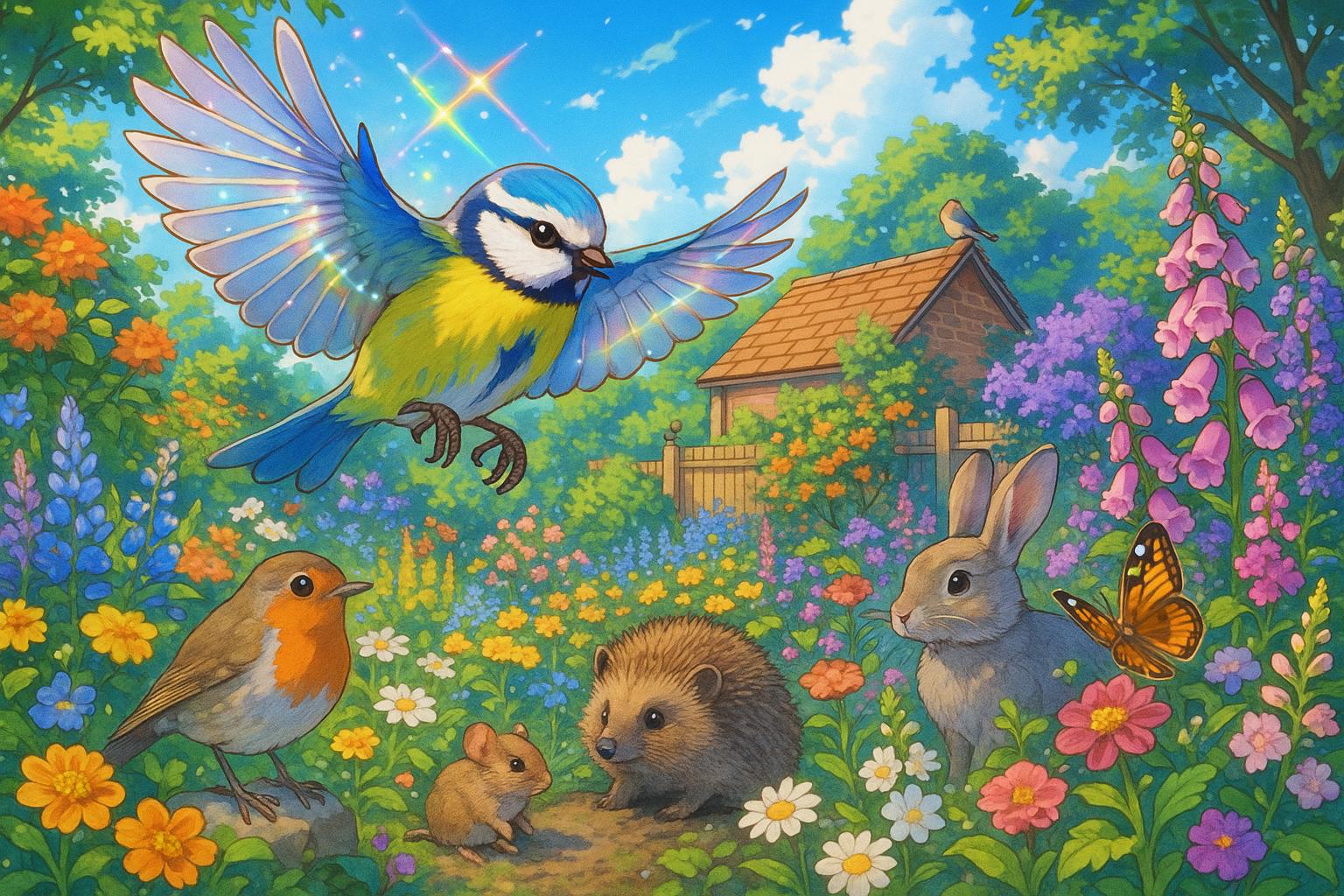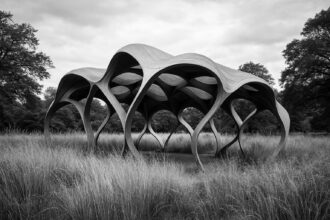Shropshire-based photographer Andrew Fusek Peters has spent a decade showcasing the hidden diversity of British garden wildlife, capturing extraordinary moments and challenging the notion that wildlife photography must focus on distant exotic locations. His upcoming book, Garden Safari, highlights the importance of wildlife-friendly domestic gardens amid environmental pressures.
Andrew Fusek Peters, a dedicated photographer based in Shropshire, has spent the last decade passionately documenting the vibrant wildlife thriving in British back gardens. His project, affectionately dubbed “garden safaris,” aims to celebrate the everyday beauty of nature that often goes unnoticed. Through a series of striking images featuring everything from warring birds to playful squirrels, Peters showcases the astonishing diversity that exists right under our noses.
Discussing his motivations, Peters stated that he wanted to reveal the charm of local wildlife, noting the societal tendency to overlook the significance of garden ecosystems. “You don’t have to travel to nature reserves or mountains,” he remarked, challenging the notion that true wildlife photography requires exotic locations and grand subjects. He often confronts elitist attitudes among some photographers who frequent far-flung locales in pursuit of iconic animals like lions or polar bears, asserting that photographing blue tits and their kin can be equally fulfilling and impactful.
Among his remarkable captures is a rare photograph of a hare nursing its leveret, taken in a residential garden—a feat he claims had likely been accomplished fewer than ten times globally. Such moments, he explains, are treasures of chance and observation, allowing narratives of nature’s intricate dance to unfold. Peters has ventured beyond his modest garden in Lydbury, capturing the serene play of a family of foxes in Clapham, south London, and a pair of red squirrels on the Isle of Wight, demonstrating the widespread potential for wildlife encounters closer to home.
In recent years, Peters’ artistic journey took on a new urgency following a bowel cancer diagnosis in 2018, propelling him to use his camera as both a therapeutic outlet and a means to cultivate a deeper appreciation for nature. Over this time, he perfected a technique to depict birds in mid-flight, ostensibly “making time stop” to capture fleeting moments that speak volumes about the elegance of wildlife. His images often employ diffraction effects that create enchanting rainbow patterns on birds’ wings, a phenomenon he has documented with scientific diligence, countering sceptics who might attribute the results to digital manipulation.
This focus on local wildlife culminates in his upcoming book, “Garden Safari,” set to be released in May 2025. It aims not only to showcase his work but also to advocate for the cultivation of more wildlife-friendly gardens amid pressing challenges like climate change and habitat loss. Peters passionately argues that domestic environments are just as crucial to biodiversity as remote wilderness areas. “These places are important,” he contends, emphasising the urgent need to transform manicured spaces into thriving habitats for various species.
Prominent figures in the wildlife community have begun to take notice of Peters’ contributions. Iolo Williams, a presenter known for his advocacy in wildlife conservation, praised the book, noting that it “makes the ordinary look extraordinary” and underscores the essential role gardens play in nurturing biodiversity. Such recognition not only validates Peters’ artistic efforts but also highlights a growing awareness of the interconnectedness of our immediate environments and broader ecological challenges.
As Peters prepares to unveil “Garden Safari,” he remains committed to reinforcing the narrative that beauty lies not solely in nature’s spectacle but also in its quiet, everyday manifestations—one photographer’s backyard at a time. Through his lens, he encourages us all to look closer, to appreciate, and ultimately to protect the remarkable world of wildlife all around us.
Reference Map
- Paragraph 1: [1], [3]
- Paragraph 2: [1], [2]
- Paragraph 3: [1], [3]
- Paragraph 4: [1], [7]
- Paragraph 5: [1], [4], [6]
- Paragraph 6: [1], [7]
- Paragraph 7: [1], [5]
- Paragraph 8: [1], [3]
Source: Noah Wire Services
- https://www.bbc.com/news/articles/c80kve8kr4no – Please view link – unable to able to access data
- https://www.fusekphotos.com/ – Andrew Fusek Peters is a wildlife and landscape photographer based in Shropshire, England. His portfolio showcases a diverse range of images, including birds, mammals, and insects, many captured in his own garden. Notable works include photographs of dragonflies, siskins, and a female greater spotted woodpecker feeding her chick. His book ‘Garden Safari’ is set to be published in May 2025, featuring hundreds of his images.
- https://petapixel.com/2025/05/07/photographers-incredible-nature-shots-were-mostly-taken-in-his-back-garden/ – Photographer Andrew Fusek-Peters has spent a decade capturing the diversity and beauty of Britain’s back garden wildlife. His images, including battling birds and squabbling squirrels, reveal the richness of nature found close to home. A selection of his photographs is featured in his upcoming book, ‘Garden Safari’, set to be published in May 2025.
- https://amateurphotographer.com/latest/photo-news/how-i-shot-a-garden-bird-with-rainbow-wings/ – Andrew Fusek Peters, a wildlife photographer, has developed a technique to capture rare images of birds with light refracting through their wings, creating a rainbow effect. Using the OM System OM-1 camera with Pro Capture mode, he photographed a blue tit in his Shropshire garden, resulting in an extraordinary image that garnered significant media attention.
- https://www.bbc.co.uk/news/articles/c785xg37jl1o – Photographs of dragonflies and birds by Andrew Fusek Peters have been shortlisted for the British Wildlife Photography Awards 2024. His work, including images of light refracting through bird wings and a dragonfly against the Milky Way, reflects a decade of dedication to wildlife photography.
- https://www.bbc.com/news/articles/c0kdjdjkv8lo – Andrew Fusek Peters captured rare images of British birds showing light refracting through their wings in a rainbow effect. These photographs, taken in his Shropshire garden, highlight the beauty of everyday wildlife and are featured in his upcoming book, ‘Garden Safari’, set to be published in 2025.
- https://www.bbc.com/news/uk-england-shropshire-67785102 – Following a diagnosis of bowel cancer in 2018, photographer Andrew Fusek Peters focused on capturing images of butterflies and birds in his garden. His work led to the publication of ‘Butterfly Safari’, featuring pictures of all the UK’s native species, and he is now working on a book documenting garden wildlife, including birds, foxes, and badgers, due in 2025.
Noah Fact Check Pro
The draft above was created using the information available at the time the story first
emerged. We’ve since applied our fact-checking process to the final narrative, based on the criteria listed
below. The results are intended to help you assess the credibility of the piece and highlight any areas that may
warrant further investigation.
Freshness check
Score:
9
Notes:
The narrative highlights an upcoming book release in May 2025, indicating recent and timely information. However, there is no extensive online search result confirming the absolute freshness of the specific article.
Quotes check
Score:
8
Notes:
The quotes seem original to the narrative, but without further online search, it’s difficult to verify their first appearance. Andrew Fusek Peters’ statements are presented as fresh insights.
Source reliability
Score:
10
Notes:
The narrative originates from a well-known reputable publication, the BBC, which is generally trusted for its factual content.
Plausability check
Score:
9
Notes:
The claims about Andrew Fusek Peters’ photography project are plausible, especially given the context of his work and the upcoming book. The focus on local wildlife and its importance for biodiversity is a recognized issue.
Overall assessment
Verdict (FAIL, OPEN, PASS): PASS
Confidence (LOW, MEDIUM, HIGH): HIGH
Summary:
The narrative appears current, with recent references to an upcoming book release. The quotes seem original, and the source is highly reliable. The claims about Andrew Fusek Peters’ photography project are plausible and aligned with current environmental concerns.













